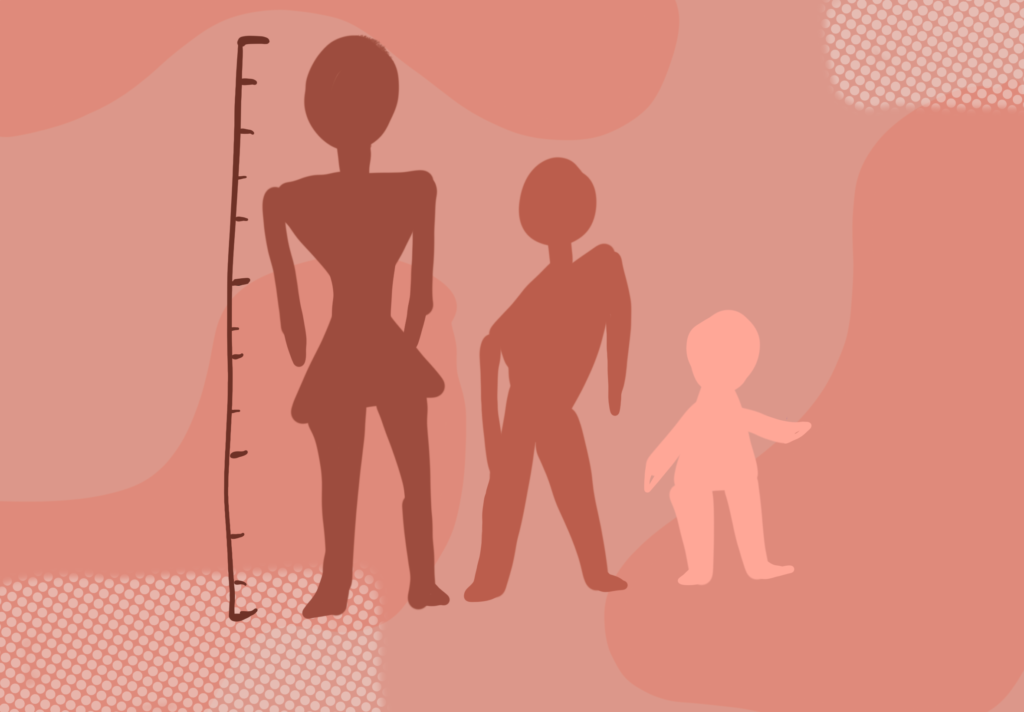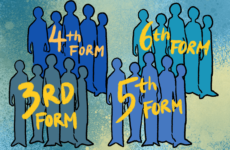
Graphic by Rielle Reyes ’27/The Choate News
By Ethan Zhang ’26 Copy Editor
Picture this: a 19-year-old 6’4 football recruit hunched over the iPad of a 13-year-old math enthusiast; they’re collaborating on a calculus problem. Should these two people, with their drastically different backgrounds and priorities, be in the same class, let alone work together? My answer is an absolute, resounding yes.
Choate boasts its diversity, specifically in the student body’s wide range of ethnicities and cultural backgrounds. Classrooms are filled with students from all over the world, which is why in-class discussions and group projects are so significant. At its core, the reason why diversity fosters meaningful discussion and collaboration is because different perspectives contribute to a more nuanced, comprehensive understanding of academic material. These distinctions in perspective often come from differences in ethnic or cultural backgrounds; however, age disparities provide the same effect.
Collaboration between students is crucial in different types of academic spaces: Humanities classes, where discussion is critical to interpreting and analyzing a text, and STEM classes, where students often work together on group projects and hands-on lab reports.
Large age gaps between peers in academic spaces may seem counterintuitive — to have valuable discourse and collaboration, shouldn’t we be at similar maturity levels? Not necessarily. There is benefit for both sides, younger and older, when collaborating in an academic space.
When I think back to my freshman year, reflecting on my beliefs and approach to academics, it’s hard to grasp just how much I’ve changed. Your high school years are some of the most formative years of your life; therefore, the growth you undergo during that time is quite significant.
Some of my most impressionable and essential moments at Choate have been from experiences with those older than me. Learning how to weld jewelry in my freshman year with a postgraduate student, navigating pre-calculus in my sophomore year with seniors, and colluding in the microeconomics market simulation as a sophomore with a senior — these academic experiences have shaped who I am. As an impressionable underclassman, juniors and seniors are figures you look up to. Healthy study habits, how to manage large workloads, which electives to take and maybe which ones to stay from — are a few things I learned from those older and more experienced than me.
Now, as an upperclassman, it would be arrogant and simply incorrect for me to believe that there isn’t value in the ideas that those younger than me produce. In fact, many of the younger students in my class seem to be very passionate and resourceful. If a younger student is placed in a more advanced class, they likely belong there and intentionally worked hard to be there.
It is absolutely true that our age shapes the media we consume, the activities we enjoy, and the people we interact with, all of which affect the academic perspective that we bring to class. However, while younger students do learn and take after their older peers, they also provide their nuanced perspectives, making the relationship between them mutually beneficial. For example, students’ approaches to interpreting English literature and solving math problems may be drastically different a few years ago than they are now. What’s key is that younger students’ perspectives are fundamentally different, not necessarily inherently inferior.
So, while it is essential for students to collaborate with peers their own age, they can and should find value in the diverse set of ideas from those older and younger than them. By fostering unique relationships through class discussions and group projects, students are expanding their worldview. If cultural differences and unique ethnic backgrounds contribute so much to diversity and nuanced perspectives, why can’t age contribute to nurturing a diverse academic space as well?




